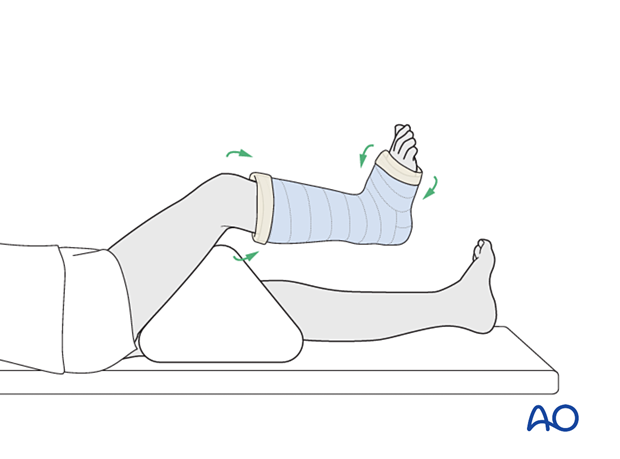Short leg cast
1. General considerations
A below-knee cast or short leg splint provides additional stabilization and can be used following closed reduction or surgical fixation in the early postoperative period.
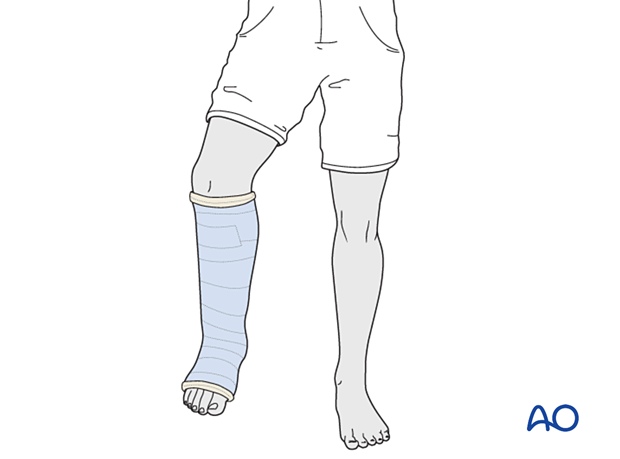
Complications
- Pressure sores
- Skin irritation
- Compartment syndrome
- Thermal burns (avoid using hot water)
Splinting
If severe swelling prevents application of a circumferential cast, a temporary splint may be applied as an alternative.
With the knee flexed, apply padding around the leg and slabs of casting material posteriorly, covering half of the circumference.
Secure the splint with an elastic bandage.
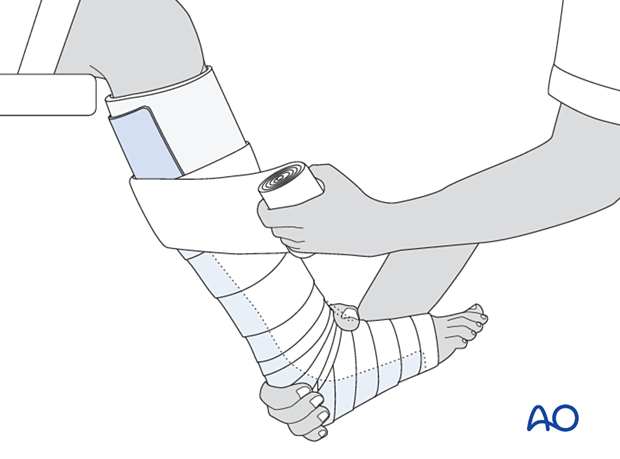
2. Material
- Tubular bandage (stockinette) of appropriate size
- Cast padding
- Felt
- Casting material: synthetic, plaster of Paris, or a combination of both
- Water
The water temperature should ideally be between 22° and 25° C.
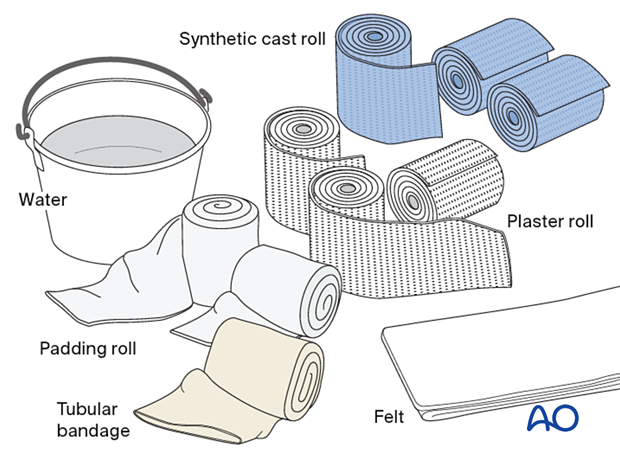
3. Casting
Patient and leg positioning
Place the patient in a supine position with a bolster under the knee to keep it flexed.
An assistant supports the knee.

Dressing
The cast extends from just below the knee to the base of the toes.
Apply a tubular bandage and cut it slightly longer than the length of the final cast.
The assistant holds the toes, not the stockinette, with the ankle in a neutral position.

Padding
Consider adding thick felt over the padding at the malleoli, tibial crest, heel, and the free edges of the cast.
Apply cast padding without creases, overlapping each layer by 50%.
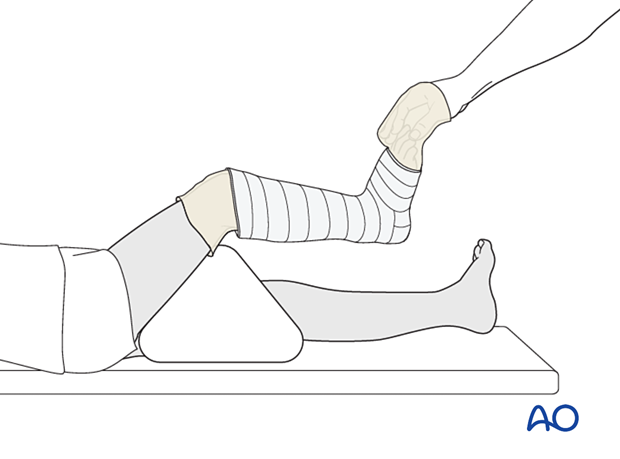
Cast application
Apply the first layer of cast material and overlap each layer by 50%.
Avoid sharp edges at the ends of the cast. Make sure the upper end of the cast is well below the popliteal fossa.
Apply further layers of cast material to produce sufficient stability.
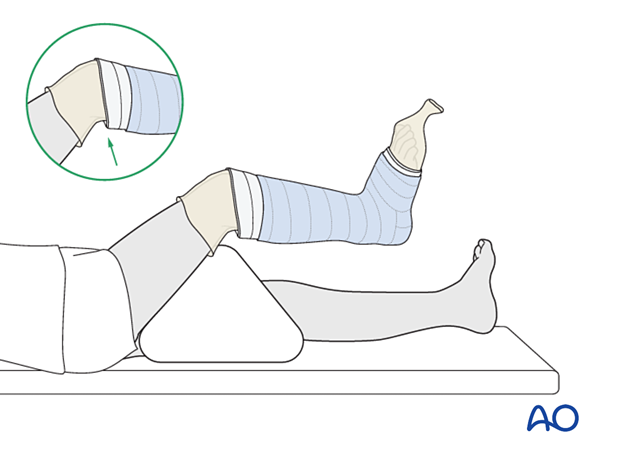
Avoid pressure over the fibular head and neck by adding sufficient padding and shortening the cast to prevent injury to the peroneal nerve.
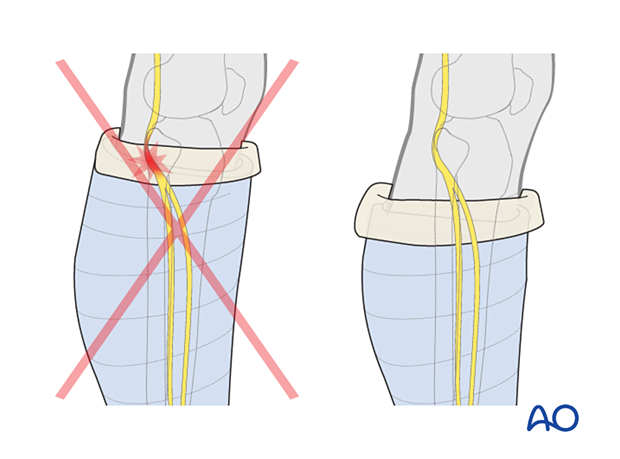
Fold the tubular bandage and padding over the edges of the cast before applying the final layer of casting material.
